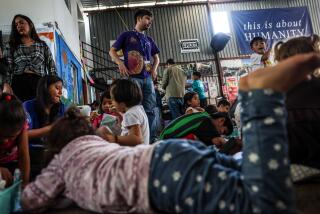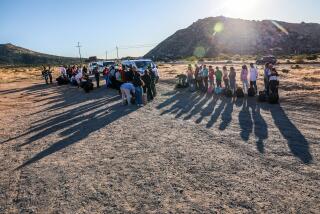Asylum seekers face decision to split up families or wait indefinitely under new border policy
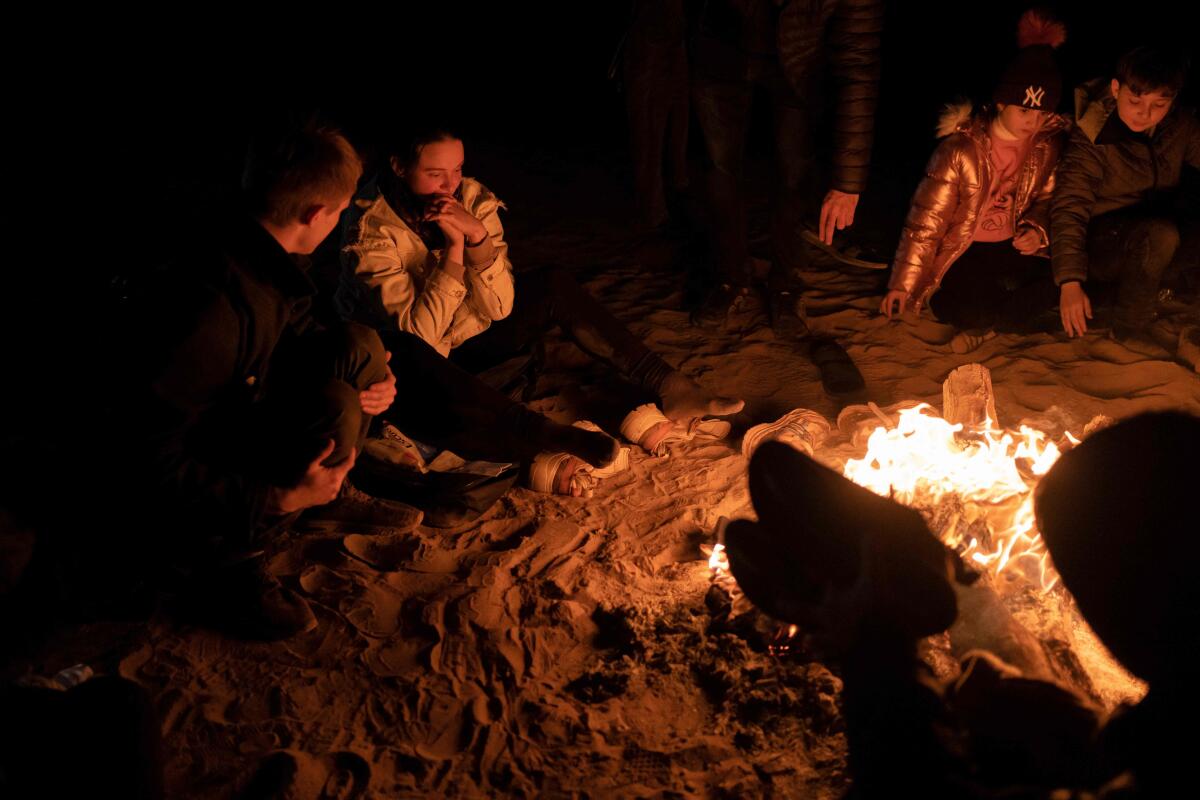
WASHINGTON — Inside a tent near the Rio Grande in Matamoros, Mexico, Jeyson woke up every day for a month before 3 a.m. to fill out applications to request asylum for his family of four through a U.S. government mobile app.
The 25-year-old from Venezuela eventually secured appointments for himself and his wife, but the slots filled up so quickly that he couldn’t get two more for their children. They weren’t worried though — they had heard about families in similar situations being waved through by border officials.
Instead, he said, a U.S. Customs and Border Protection agent told them last week that because each member of the family did not have an appointment: “You two can enter, but not your children.” Jeyson asked The Times to withhold his last name out of fear for his family’s safety.
Now many families like Jeyson’s have found themselves confronted with a seemingly impossible decision: Wait indefinitely for enough appointments for the whole family, or split up. It is unclear just how many migrants have been affected.
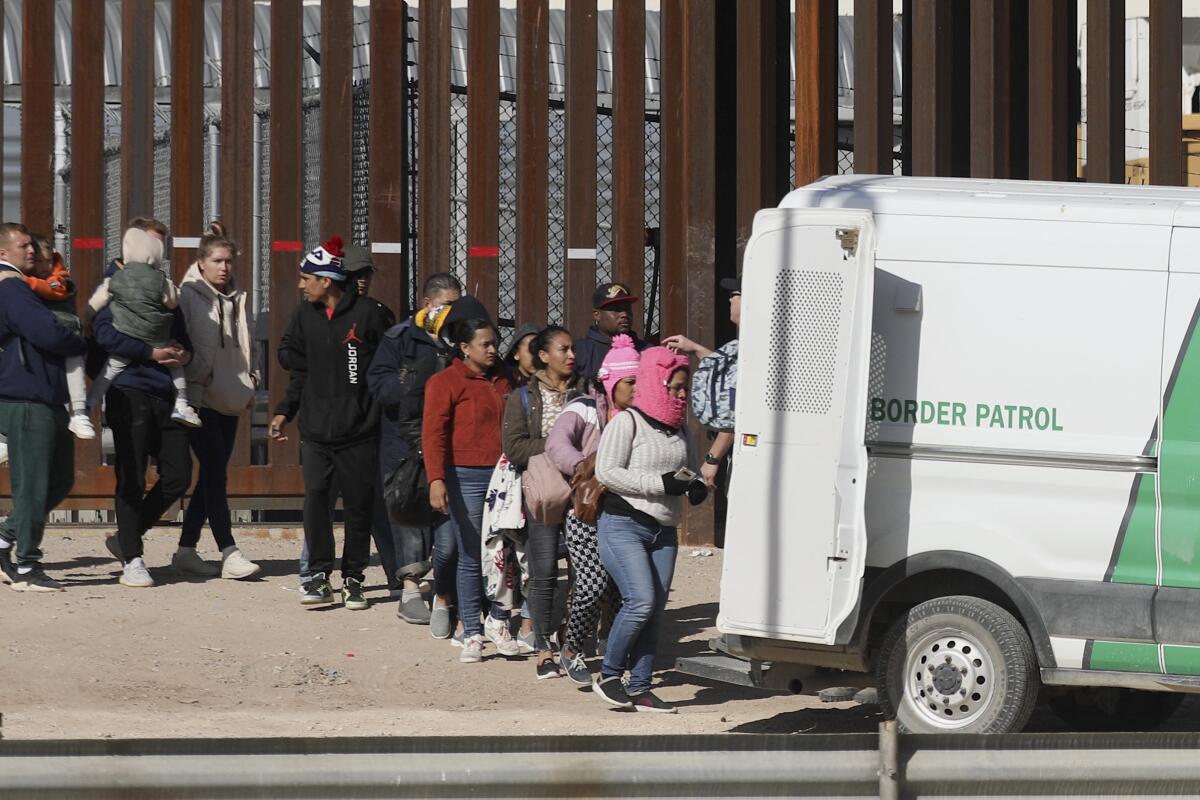
The CBP One mobile application, which was rolled out last month, was intended to reduce the number of illegal crossings between ports of entry. Now the only government-sanctioned way to request humanitarian protection at the border, it requires all members of a family to have confirmed appointments. But with such high demand, families have found it practically impossible to secure enough slots.
Migrants and advocates near the Texas, Arizona and California borders said that initially, CBP agents overlooked the requirement and accepted families as long as at least one person had a registered appointment. Earlier this month, however, as demand for appointments grew, agents began enforcing the policy.
“Now what you have is a system that privileges single people,” said Priscilla Orta, a supervising attorney at Lawyers for Good Government in Brownsville, Texas.
Migrants in northern Mexico near the U.S. border say they’ve encountered a variety of technical issues while attempting to secure appointments with border agents: Daily appointments run out within minutes on the app, which has been prone to crashing and is unavailable in most languages. Users of the app have also reported that the facial recognition feature has failed to capture users with darker skin or fidgeting babies.
The Department of Homeland Security, which oversees CBP, said errors during submission are due to appointments no longer being available, not problems with facial recognition, and that the feature thwarts scammers who could book appointments to later sell them. CBP said it has updated the face capture process to resolve the issue, now allowing migrants to submit still photos during registration.
DHS spokesman Luis Miranda said the free app cuts out smugglers, decreases migrant exploitation and improves security and efficiency. He said CBP updated the app this week to make it easier for family units to secure appointments by releasing them in larger batches at fewer intervals of time. For example, instead of 20 appointments released every 15 seconds, 40 appointments could be released every 30 seconds, giving families a better chance to compete before the slots run out.
“DHS is committed to family unity,” he said. “The CBP One app is a transparent and publicly accessible way to schedule appointments for migrants seeking to arrive at a land port of entry.”
Seeking asylum is a legal right under U.S. and international law, regardless of how someone arrives on U.S. soil. But under a pandemic-era public health policy called Title 42, migrants are prevented from seeking asylum at the border. On Jan. 12, immigration authorities started allowing migrants to request exceptions to the policy if they met certain “vulnerability criteria” such as having immediate safety or medical concerns.
Use of Title 42 at the border is expected to end on May 23, and officials have said they are negotiating a deal to deport non-Mexican migrants to Mexico after that time. On Tuesday, the Biden administration announced a policy that would limit asylum access for migrants who cross into the U.S. without authorization and fail to apply for protections on the way to the southern border.
Meanwhile, many migrants live in unsanitary tent encampments without regular access to food and clean water. Human Rights First has tracked more than 13,480 reports of violent attacks on migrants blocked in or expelled to Mexico, including murder, kidnapping and rape, since President Biden took office in January 2021.
DHS is under federal court order to track and report the number of people allowed into the country through exceptions. Filings show nearly 21,900 people used CBP One to enter the U.S. in January, a slight decrease from just over 23,000 people who entered under a similar process in December. Republican-led states that sued to keep Title 42 in place have closely monitored those monthly reports and in November filed a motion accusing DHS of increasing exceptions without properly notifying the court, which the federal government denied.
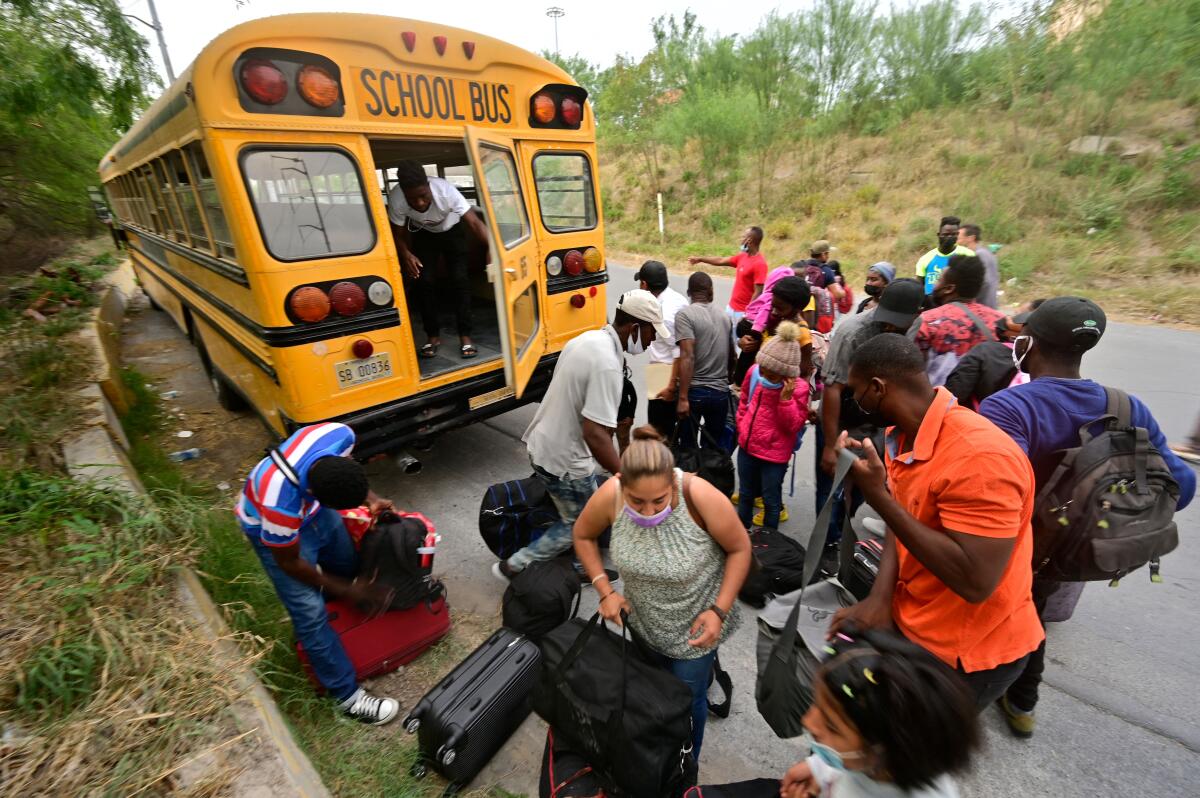
DHS officials said that border agents have occasionally used their discretion to allow unscheduled family members entry, but that large numbers of people recently began showing up with just one appointment scheduled for an entire family. The agency hasn’t seen an indication that any particular group is being disadvantaged based on appointment data, officials said, and more improvements to streamline scheduling will roll out soon.
Pedro de Velasco, advocacy director at the Kino Border Initiative, a Catholic humanitarian aid group based in Nogales, Ariz., disagreed that migrants intentionally failed to schedule enough appointments. He said CBP should dedicate some employees to process migrants who need help troubleshooting the app, much like cashiers available to help customers who get stuck when using the self-checkout line at a grocery store. He also recommended the agency designate appointments each day for larger families.
Tom Cartwright, who tracks deportation flights for the organization Witness at the Border, said DHS should publicly communicate all changes to the process so applicants aren’t left in the dark and have a clear understanding of the requirements.
Applying for asylum through the app is a two-step process: Migrants must first register and then schedule an appointment, which could require trying daily until a sufficient number of spots are secured. Many migrant families were unaware that they should register as individuals under the same group.
Jean, 31, of Haiti, who asked to be identified by his first name for his safety, had scheduled two appointments last week in Laredo, Texas, which was six hours from the shelter in Reynosa, Mexico, where his family has lived for the past three months. He, his wife and daughter rode two buses to avoid cartel-controlled roads and paid about $300 in transportation and lodging to get to the appointments, only to be turned back. Despite daily attempts on the app for the past week, they haven’t been able to secure three new appointments.
“It’s too complicated, too difficult,” he said of the app. “Now we have nothing. When I returned here, I asked a woman for a little food to eat.”
Jeyson said his family’s journey to the U.S.-Mexico border was harrowing. They left Venezuela in September after government-affiliated armed groups threatened them, he said, crossed the dangerous jungle between Colombia and Panama, were jailed three times in southern Mexico and arrived in Matamoros to find migrant shelters full.
Some days, they don’t eat, he said. The squalid living conditions at their tent encampment, where hundreds of migrants share five portable toilets, left his son with an eye infection and his wife with a urinary tract infection.
Penniless and too afraid to travel to a different city, Jeyson hoped four spots would open up at the Brownsville, Texas, port of entry. On the international bridge last week, they and several other families tearfully pleaded with a CBP agent, who replied that he would start taking photos of those who refused to leave, Jeyson said. His family fled, forgetting a suitcase that contained all their spare clothes.
Jeyson’s wife has since managed to secure a single appointment for next month. Their new plan is for her to go alone and Jeyson to stay behind with their children until he can get three additional appointments.
“We already risked it all,” he said. “What can we do? We are hopeful that we can get three appointments. Three, in the end, is less than four.”
Advocates said some parents are making the decision to leave their children in the care of extended family or friends and keep their appointments with CBP.
Jeyson said another couple from the tent encampment did just that, leaving their five children at the border bridge and entering the U.S. after managing to get only two appointments.
Children who are unaccompanied by a parent are exempt from Title 42. Those in the care of adults who are not their legal guardian — even if they are extended family — are separated until a guardian can be properly vetted. Jeyson said he watched as the children walked up to a border agent and were taken into custody.
Felicia Rangel-Samponaro, director of the Sidewalk School, a nonprofit that offers education, medical care and other assistance to migrants in Mexican border towns, has organized sessions with parents at various shelters and encampments in Matamoros and Reynosa to explain what will happen if they send their child across the border unaccompanied.
“We don’t want them to think you cross and then your child crosses and will come back to you a day later,” she said. “We were surrounded by parents who were showing us, one after the other, how they have an appointment but their child does not.”
Rangel-Samponaro recommended to parents that they cancel the appointment and restart their search. But after the sessions, some parents told her they would separate from their kids anyway.
“Family separation has never stopped,” she said, referencing the Trump administration’s “zero tolerance” border policy that led to thousands of migrant children being taken from their parents, prompting outrage and investigation. “The only difference here is that CBP One is now doing it instead of the other ways it’s been done since 2018.”
More to Read
Get the L.A. Times Politics newsletter
Deeply reported insights into legislation, politics and policy from Sacramento, Washington and beyond. In your inbox three times per week.
You may occasionally receive promotional content from the Los Angeles Times.

